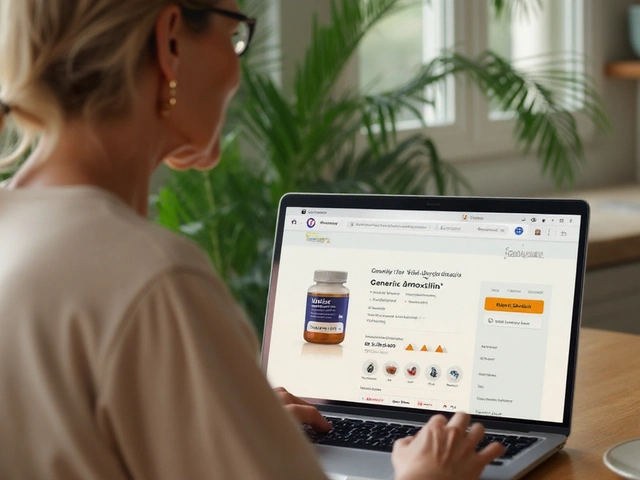
When it comes to keeping your liver in shape, the market is flooded with pills, powders, and herbal blends. Rumalaya has gained a reputation as a premium liver‑health formula, but how does it stack up against other options you might find on the shelf? This guide walks you through the key ingredients, clinical backing, price points, and real‑world pros and cons so you can pick the supplement that truly matches your needs.
Key Takeaways
- Rumalaya combines Milk Thistle, Artichoke, and Turmeric for a multi‑target approach.
- Liv‑52 offers the longest track record of clinical studies, especially for alcohol‑related liver stress.
- TUDCA shines for bile‑acid regulation but is pricier than most herbal blends.
- Choose based on your primary concern: detox, inflammation, or bile flow.
- Always check for potential interactions with medications or existing health conditions.
What Is Rumalaya?
Rumalaya is a herbal liver‑support supplement that blends Milk Thistle extract, Artichoke leaf, and Curcumin (from Turmeric) in a capsule form. Launched in 2022, the formula targets oxidative stress, fat accumulation, and inflammation-three common pathways that can impair liver function.
Key ingredients:
- Milk Thistle (Silybum marianum) - 300 mg standardized to 80 % silymarin.
- Artichoke leaf extract - 200 mg for bile‑acid stimulation.
- Curcumin (Turmeric) - 100 mg plus piperine for enhanced absorption.
The product is marketed as vegan, gluten‑free, and free from artificial colors or preservatives. Typical dosing is two capsules daily with meals.
Top Alternatives to Rumalaya
Below are the most frequently compared liver‑support supplements, each with its own strength.
Milk Thistle - Often sold as a single‑herb product, it provides a high concentration of silymarin, the active flavonoid complex shown to protect liver cells from toxins.
Liv‑52 - A proprietary blend from Himalaya that combines 10 herbs, including caper bush, black nightshade, and chicory, backed by over 30 clinical studies.
TUDCA (Tauroursodeoxycholic acid) - A bile‑acid derivative that improves cholestasis and has growing evidence for neuroprotective benefits.
Artichoke Extract - Focuses on stimulating bile flow and reducing liver fat, often paired with other herbs.
Dandelion Root - A gentle diuretic that supports liver detoxification and is popular in traditional Chinese medicine.
Turmeric (Curcumin) - Anti‑inflammatory powerhouse, frequently combined with piperine for better bioavailability.
N‑Acetylcysteine (NAC) - A precursor to glutathione, the body’s master antioxidant, widely studied for acetaminophen overdose and chronic liver disease.
Silymarin - The purified extract of Milk Thistle; sometimes sold as a standalone, sometimes embedded in blends.
Side‑by‑Side Comparison
| Product | Key Ingredients | Typical Daily Dose | Approx. Price (USD) | Clinical Evidence | Pros | Cons |
|---|---|---|---|---|---|---|
| Rumalaya | Milk Thistle 300 mg, Artichoke 200 mg, Curcumin 100 mg + piperine | 2 capsules | $45 (30‑day supply) | Small pilot study (n=45) showing 12 % ALT reduction | Multi‑target, vegan, easy dosing | Limited large‑scale trials |
| Liv‑52 | 10‑herb blend (caper, chicory, etc.) | 2 tablets | $30 (30‑day supply) | 30+ studies, including randomized controlled trials | Well‑researched, affordable | Complex blend may cause GI upset for some |
| Milk Thistle (single‑herb) | Silymarin 200 mg | 1-2 capsules | $20 (60‑day supply) | Meta‑analysis shows modest ALT improvement | High silymarin concentration | May interact with anticoagulants |
| TUDCA | Tauroursodeoxycholic acid 250 mg | 1 capsule | $70 (30‑day supply) | Clinical trials for cholestasis, emerging neuro studies | Effective for bile‑acid regulation | Expensive, limited OTC availability |
| Artichoke Extract | Artichoke leaf 300 mg | 2 capsules | $25 (30‑day supply) | Small RCTs show reduced liver fat | Good for triglyceride management | Less comprehensive than multi‑herb blends |
How to Choose the Best Liver Supplement for You
- Identify Your Primary Goal. Are you looking to detox after alcohol, manage fatty liver, or support bile flow? Different ingredients excel at each.
- Check Clinical Backing. Products like Liv‑52 and TUDCA have multiple peer‑reviewed studies; newer blends often rely on smaller pilot data.
- Consider Cost vs. Benefit. A $70 bottle of TUDCA may be unnecessary if you only need mild antioxidant support, which can be achieved with Milk Thistle + Turmeric.
- Look for Add‑On Ingredients. Combination formulas (Rumalaya, Liv‑52) give broader coverage, but individual herbs let you target a specific pathway.
- Watch for Interactions. If you’re on blood thinners, high‑dose Milk Thistle or Turmeric might increase bleeding risk.

Pros and Cons at a Glance
| Product | Pros | Cons |
|---|---|---|
| Rumalaya | Combines antioxidant, bile‑stimulating, and anti‑inflammatory agents; vegan. | Limited large‑scale trials; mid‑range price. |
| Liv‑52 | Extensive research; affordable. | Complex blend may cause stomach upset. |
| Milk Thistle (single‑herb) | High silymarin dosage; inexpensive. | Focuses only on antioxidant pathway. |
| TUDCA | Powerful for cholestasis and bile regulation. | Costly; prescription‑level availability in some regions. |
| Artichoke Extract | Effective for reducing liver fat; gentle. | Less comprehensive without additional herbs. |
Practical Tips for Using Liver Supplements Safely
- Take with food to improve absorption, especially for Curcumin.
- Start with the lowest recommended dose and monitor any side effects.
- Pair supplements with lifestyle changes: limit alcohol, eat a Mediterranean‑style diet, and stay active.
- Run basic liver function tests (ALT, AST, GGT) after 8‑12 weeks to gauge effectiveness.
- Consult a healthcare professional if you are pregnant, nursing, or on chronic medication.
Frequently Asked Questions
Can I take Rumalaya together with Milk Thistle?
Yes, but it may be redundant because both contain silymarin. If you already take a high‑dose Milk Thistle, you might skip the Rumalaya capsules or reduce the dose to avoid excess.
How long does it take to see results?
Most users notice a mild improvement in energy and digestion within 4‑6 weeks, but measurable changes in liver enzymes typically require 12‑16 weeks of consistent use.
Is TUDCA safe for long‑term use?
Clinical data suggest TUDCA is well‑tolerated for up to a year, but regular blood work is recommended because high bile‑acid levels can affect cholesterol metabolism.
Do liver supplements replace a healthy diet?
No. Supplements are adjuncts. A diet rich in leafy greens, healthy fats, and limited processed sugars remains the cornerstone of liver health.
Can I take Rumalaya if I have a gallbladder issue?
Proceed with caution. The Artichoke component stimulates bile flow, which might aggravate gallstones. Consult a physician before starting.





Comments (10)
Harry Bhullar
When you start digging into the landscape of liver support supplements, the first thing that jumps out is how many brands try to market a "one‑size‑fits‑all" solution while the underlying biochemistry tells a very different story. Rumalaya, for instance, throws together Milk Thistle, Artichoke leaf, and Curcumin, which on paper gives you antioxidant protection, bile‑acid stimulation, and anti‑inflammatory action all in one capsule. The logic behind that trio is sound – oxidative stress, fat accumulation, and inflammation are the three big culprits in non‑alcoholic fatty liver disease, and each herb hits a different node in that network. But the devil is in the details: the Milk Thistle in Rumalaya is standardized to 80 % silymarin, which is comparable to most high‑quality single‑herb products, yet the clinical data for such a dose are still limited to small pilots. Meanwhile, the Artichoke extract at 200 mg is lower than what you see in dedicated Artichoke‑only formulas that often push 300 mg to really up‑regulate bile flow. Curcumin, as you know, suffers from poor bioavailability, so the inclusion of piperine is essential, but even then you’re looking at roughly a 20 % absorption boost, not a miracle dose.
The price point of $45 for a 30‑day supply puts Rumalaya in the middle of the market – more expensive than a basic Milk Thistle capsule but cheaper than TUDCA, which can top $70 for a month’s worth. If you compare that to Liv‑52, you get a broader herb matrix at $30, backed by dozens of clinical studies, though some users report gastrointestinal upset from the complex blend. TUDCA is a different beast entirely; it targets bile‑acid homeostasis directly and is the go‑to for cholestasis, but its cost and limited OTC availability make it a niche player.
From a safety perspective, all the ingredients in Rumalaya are generally regarded as safe, but you still need to watch out for interactions. High‑dose Milk Thistle can potentiate the effects of anticoagulants, and Curcumin can also interfere with blood thinners and certain chemotherapy agents. The Artichoke component stimulates bile secretion, which is great for gallbladder health but could exacerbate gallstones. So the bottom line is that Rumalaya is a decent multi‑target option for someone looking for a balanced approach, but if you have a specific problem – say, severe cholestasis or a need for high‑dose silymarin – you might be better served by a more focused product.
In practice, I’d recommend a trial period of 8‑12 weeks, taking the two capsules with meals to improve Curcumin absorption, and then re‑checking liver enzymes. If you see a modest 10‑15 % drop in ALT/AST, that’s a reasonable signal that the formula is doing its job. If not, consider swapping in a single‑herb high‑dose Milk Thistle or adding a low‑dose TUDCA under physician supervision. Ultimately, the choice hinges on your primary goal – detox, inflammation control, or bile flow – and how much you’re willing to spend for the evidence backing each ingredient.
Dana Yonce
Sounds like a solid overview! 😊
Ashok Kumar
Interesting that you point out the multi‑target claim, because in reality stacking silymarin with artichoke and curcumin often ends up being redundant – the silymarin already covers the antioxidant pathway, and the artichoke dose here is hardly enough to make a measurable difference in bile flow. Still, the sarcasm of marketing a "premium" blend when the evidence base is still tiny is hard to miss.
Jasmina Redzepovic
From a translational pharmacology standpoint, the synergistic hypothesis you propose lacks rigorous pharmacokinetic modelling; most of the cited studies on silymarin‑artichoke co‑administration are underpowered and fail to account for first‑pass metabolism variability across ethnic cohorts. Moreover, deploying jargon‑heavy descriptors without robust RCT data borders on brand‑centric pseudo‑science, which ultimately dilutes the therapeutic signal for clinicians trying to parse real‑world efficacy.
Esther Olabisi
Gotta say, the quick‑fire summary was super helpful, and I’m vibing with the idea of a balanced blend – just don’t forget to stay hydrated while you’re at it! 😎
Ivan Laney
Look, the reality of supplement economics is that most consumers are swayed by glossy packaging rather than hard data, so any brand that can pull a "premium" label onto a modest herb stack will sell like hotcakes, especially when they pepper the marketing copy with phrases like "clinically backed" without providing the actual study citations. It’s a classic case of hype overtaking science, and while there’s nothing inherently wrong with combining Milk Thistle, Artichoke, and Curcumin, the market dynamics reward the most aggressive advertising spend, not the most evidence‑based formulation. In short, if you’re digging for genuine efficacy, you’ll have to look beyond the hype and scrutinize the trial designs, sample sizes, and conflict‑of‑interest disclosures – a tedious process that most shoppers skip in favor of a quick Instagram endorsement.
Kimberly Lloyd
Even as we dissect the science, it’s worth remembering that liver health is as much about lifestyle as it is about any capsule. A balanced diet, regular movement, and mindful moderation of alcohol can amplify whatever modest benefits a supplement offers. So consider these blends as an extra layer, not the foundation, of your wellness routine.
Sakib Shaikh
yo bro i totally get u!! but like, u know the liver is like a superhero organ, right? sooo we need all the powerrr stuff, no? even if the studies are tiny they still count, trust me!!!
Chirag Muthoo
It would be prudent to approach any supplementation plan with a measured perspective, ensuring that one’s baseline hepatic function is documented via standard biochemical panels before initiating therapy. Moreover, adherence to a structured dosing schedule, preferably with meals to enhance nutrient absorption, can mitigate potential gastrointestinal side effects that are occasionally reported with polyherbal formulations.
Angela Koulouris
Great points! 🌟 Think of your liver as the engine of a vibrant, colorful car – it needs premium fuel, regular check‑ups, and a smooth ride to keep dazzling everyone on the road.